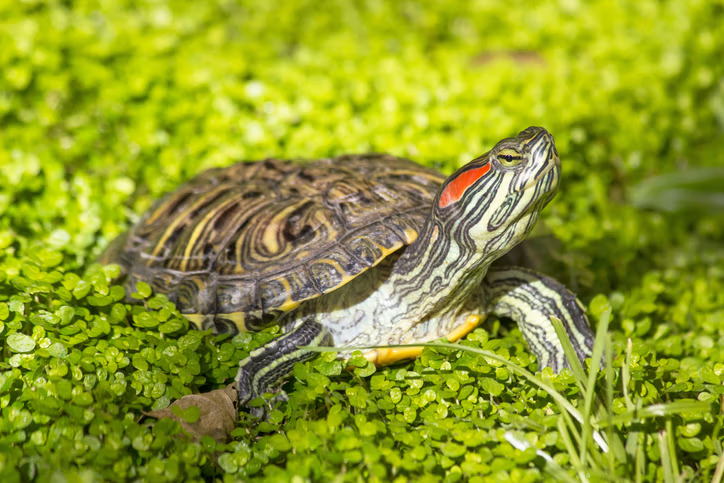The red-eared slider is a medium-sized aquatic turtle with a patch of red on each side of its head. The carapace (upper shell) is olive brown with numerous black and yellow lines.
The yellow-bellied slider (T. s. scripta), a subspecies that is native to southeastern states. It lacks the red “ear” marking and somewhat resembles the eastern river cooter. The plastron is mostly yellow with black spots along the edges.
The red-eared slider occurs in a wide variety of aquatic habitats – but it prefers a mud bottom, plenty of aquatic plants, and abundant basking sites. This turtle lives in both natural waters (including rivers, sloughs, and oxbow lakes) and human-made waters (such as ditches, ponds, and reservoirs). Red-eared sliders living in the Mississippi River prefer slow, muddy habitats.
Courtship and mating occur between mid-March and mid-June; this species might also breed in autumn as well. Egg-laying occurs between April and mid-July, with most eggs laid in May and June in Missouri. Females ready to lay their eggs leave the water and search for a suitable egg-laying site. Throughout their range, females lay up to 30 eggs per clutch (with an average of 10 eggs in a clutch). Females leave the water and lay up to 22 eggs in a clutch. Some females may lay more than one clutch during a season. Hatching usually takes place in late summer or early autumn, with incubation probably lasting some 68–70 days. Young turtles usually remain in the nest and emerge the following spring.
Males may attain maturity at 4 or 5 years of age, but possibly up to 7 or 8 years in colder habitats and ranges. Females become mature at the age of 13 or 14. Individuals have been reported to live up to 37 and 49 years of age in captivity.
“Red Eared Slider”, The Missouri Department of Conservation


